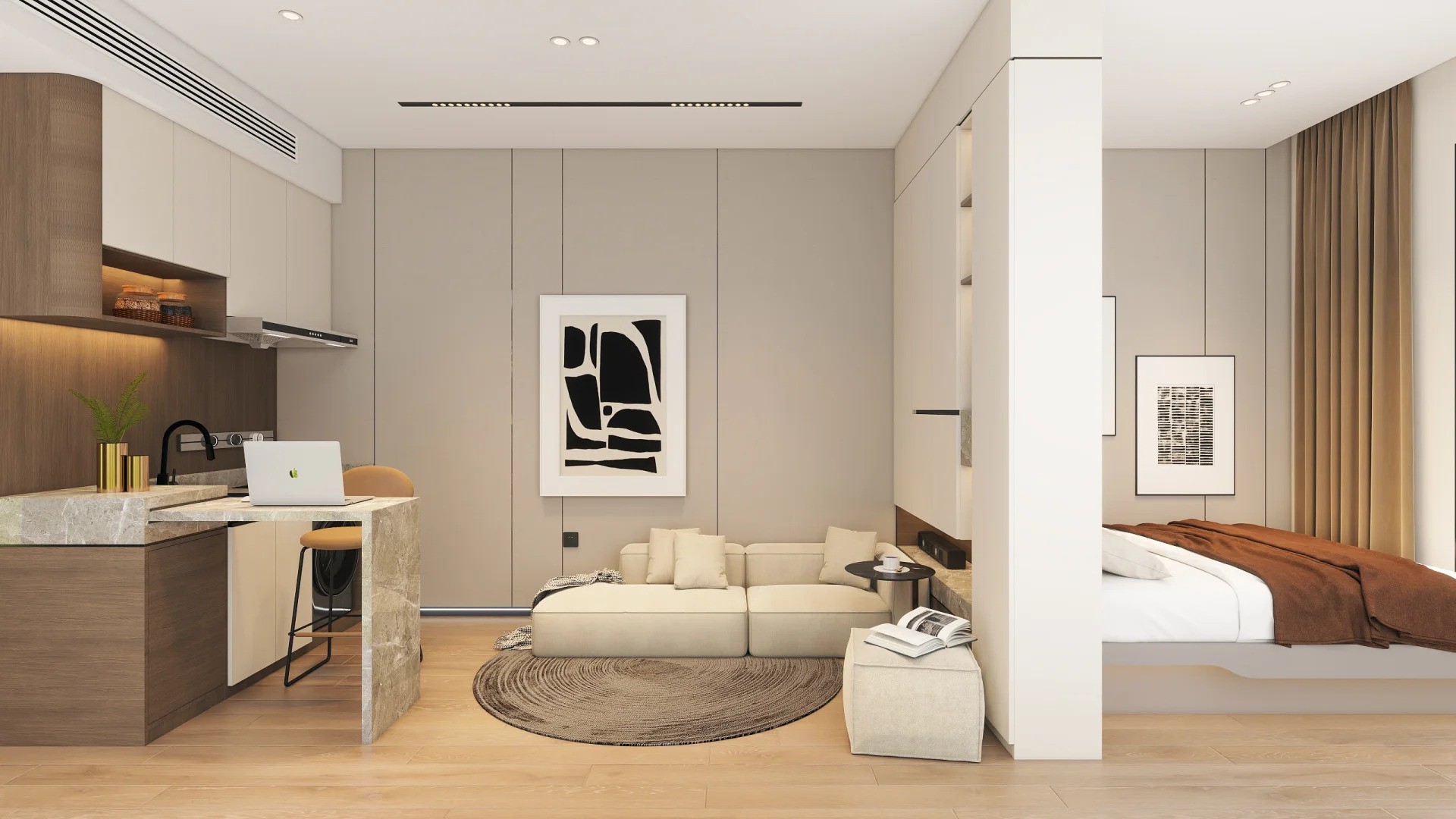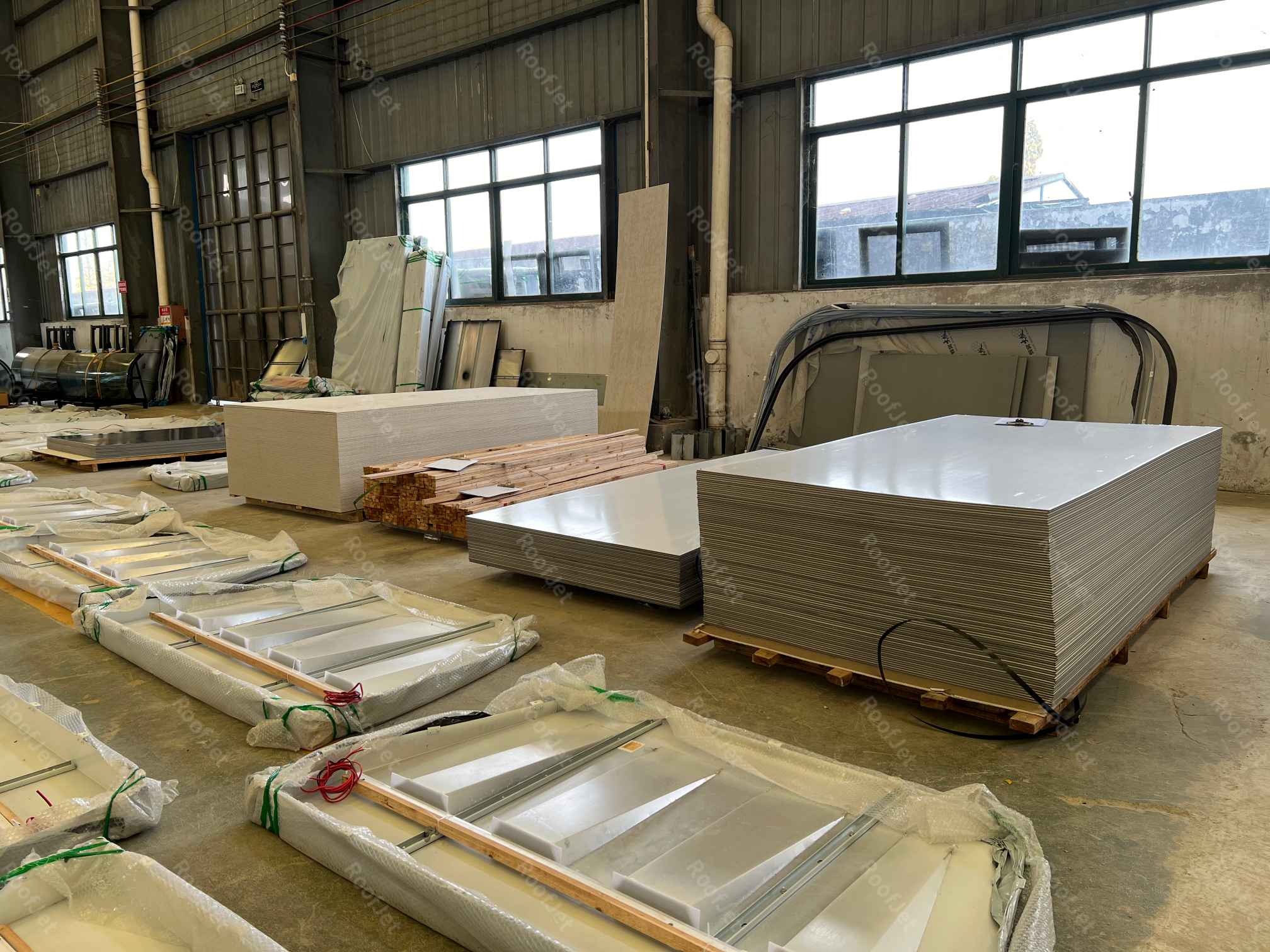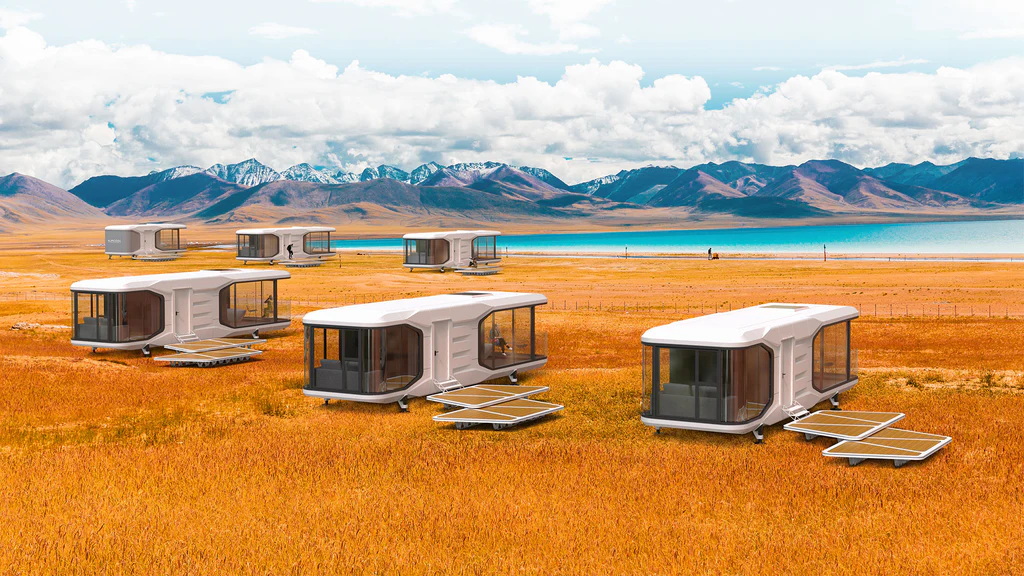You might not realize that the average person spends nearly 90% of their time indoors, making the design of your living space vital to your well-being. In the world of capsule houses, thoughtful Capsule House design that blends functionality with style can transform how you experience home life while also cutting costs. By focusing on smart technology and innovative materials, you can create a compact yet inviting environment. But what specific strategies can help you maximize both comfort and savings in such a limited space? Let's explore the essential elements that make capsule living not just feasible, but truly enjoyable.

Designing a space capsule house requires a keen understanding of space-saving principles and their psychological impact on residents. When you explore capsule house design, prioritize maximizing utility while guaranteeing comfort.
Employ techniques like mirrored walls or transparent partitions to create an illusion of expanded space, enhancing visual perception and promoting a sense of openness. Ergonomics also plays an essential role; you'll want to verify that the layout accommodates smooth movement, especially for single or double occupancy, adhering to a minimum radius for ease of navigation.
Consider the three-zone separation design, which effectively segments sleeping, working, and storage areas in a compact 8-square meter capsule house, as seen in Tokyo. This arrangement not only optimizes functionality but also reduces clutter, fostering a more tranquil environment.
Utilizing capsule house materials that emphasize durability and aesthetics is important for both modern capsule houses and capsule house commercial projects. By integrating these space-saving strategies and psychological insights, you'll create a living space that feels larger than its physical dimensions, promoting a balanced, efficient lifestyle tailored to your needs.

When selecting materials for capsule houses, it's crucial to strike a balance between durability and lightweight design.
You'll want to contemplate materials like aerospace aluminum, known for its impressive cost-to-strength ratio, weighing in at just 2.7g/cm³. Alternatively, carbon fiber offers a lighter option at 1.6g/cm³, making it a top contender for structures requiring both strength and weight savings.
For external durability, look at 304 stainless steel versus galvanized steel. The former shows superior rust resistance in salt spray tests, ensuring longevity in harsh environments.
If eco-friendliness is a priority, take into account recycled materials, such as upcycled ship container steel, which maintains structural integrity while being environmentally responsible.
In humid climates, laminated fiberglass is effective, though be wary of UV deterioration.
Preserved wood works well in temperate forests but has a termite risk to monitor.
Regional procurement can also control costs; bamboo steel, particularly in Southeast Asia, is considerably cheaper but demands fireproofing.

In the era of smart technology, integrating advanced systems into your capsule house design can greatly enhance your living experience. Imagine seamlessly controlling your home environment through voice commands or a mobile app, thanks to IoT capabilities.
Smart tech not only adds convenience but also optimizes energy usage, noticeably reducing your utility bills over time.
Key features to evaluate include an automated micro fresh air system, ensuring CO ?levels remain below 1000 ppm for a healthier living space. Replacing traditional TVs with hidden projectors saves valuable wall space, allowing for a more open feel in your compact environment.
While the initial investment in smart systems may seem high, conducting a cost-benefit analysis reveals that the long-term energy savings often offset these costs.
You gain control over your energy consumption and enhance your living comfort with features like automated climate control and energy-efficient appliances.

Maximizing ROI in capsule house commercial use hinges on strategic design choices that enhance functionality and appeal.
Begin by incorporating features like antimicrobial surfaces in hotel pods for quick cleaning, which can greatly boost guest satisfaction and retention. In office capsule designs, consider acoustic parameters for soundproofing, guaranteeing a tranquil work environment that promotes productivity. Aim for a sound transmission class (STC) of 50 or higher for ideal privacy.
Investment in smart technology, such as smart door locks, can yield a 15% rental premium with only a $500 cost increase, resulting in a shortened payback cycle of just two months. These features not only enhance security but also attract tech-savvy clients seeking modern conveniences.
Utilize stackable units to maximize space efficiency, allowing for versatile configurations that cater to different market demands.
Carefully curate your design elements to appeal to your target demographic, whether it's young professionals or eco-conscious travelers. By making thoughtful design choices, you'll not only improve the user experience but also guarantee a higher return on investment, transforming your capsule house into a lucrative venture.
Did you know that capsule houses can cost around $100 to $200 per square foot? By choosing efficient materials and smart designs, you can control your budget while creating a stylish, functional living space.
It typically takes between three to six months to construct a capsule house, depending on design complexity and local regulations. You'll want to plan carefully to guarantee timely delivery and meet your specific needs.
Oh sure, because who wouldn't want to squeeze a family into a compact capsule house? But really, with smart design and multifunctional spaces, they can work well—if you embrace minimalism and creativity in parenting!
You'll need to research local zoning regulations for capsule houses, as they vary widely. Check land use classifications, minimum square footage, and building codes to guarantee compliance and streamline your design and construction process effectively.
Capsule houses can enhance property value over time, especially in urban areas. Their innovative design, energy efficiency, and space-saving features attract buyers, ultimately leading to appreciation, particularly as sustainable living gains popularity.
In the domain of modern living, your capsule house stands as a beacon of innovation, merging function with style like a finely tuned instrument. Each element, from the aerospace aluminum frame to the smart tech embedded within, symbolizes a commitment to sustainability and efficiency. As you embrace this compact sanctuary, you're not just saving space—you're crafting a lifestyle that harmonizes comfort and eco-consciousness. Ultimately, your capsule house is more than a structure; it's a transformative experience waiting to unfold—and if you need support, we're always ready to help.
